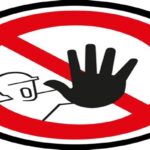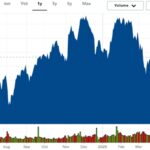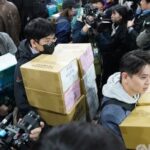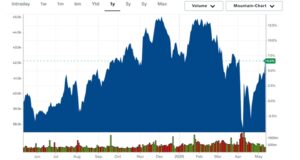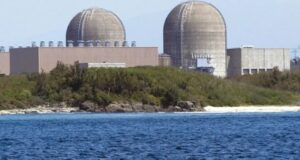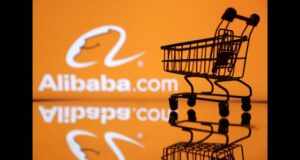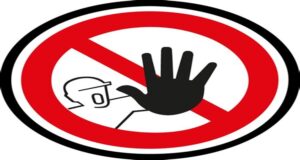
Square one
“In other words, on the trade and tariffs front, for three months, the United States and China are back to where they were before Liberation Day….
“At this point, American levies on Chinese goods are still considerably higher than Chinese duties on U.S. goods. But of course tariffs have been far from the only Chinese barriers to U.S. exports, and in many cases not even the most important. There’s the value-added tax imposed by China (and nearly all of America’s other trade partners/competitors) along with the rebates for exported items—which of course acts as a subsidy. China’s range between six and 13 percent (varying by product). Nothing in today’s deal on them.
“Nor does the agreement require China to eliminate or even abolish the plethora of other non-tariff barriers and predatory practices that dominate Beijing’s trade policies—like intellectual property theft and forced technology transfers and local content requirements and discriminatory government procurement and currency manipulation and industrial policies…
“Two other huge missing ingredients in this new set of Trump China trade policies: monitoring and enforcement of their provisions.”
—“(What’s Left of) Our Economy: Trump’s China Deal Looks Like a Cave,” RealityChek, Alan Tonelson, May 12, 2025
Maybe not surrender
“Investors may be popping corks, but not everyone is celebrating. Critics across the political spectrum are warning that the deal amounts to a strategic retreat by the United States—one that gives up hard-won leverage in exchange for vague promises.
“Alan Tonelson delivered a scathing rebuke on Monday, writing that ‘it looks like so far it’s the Trump administration that just blinked—and blinked hard.’ While the administration retains a 30 percent average tariff, Tonelson argues that the U.S. has effectively rolled back to the pre-Liberation Day status quo, the very posture Trump said was intolerable….
“Those are hints that the China trade story is far from over. The White House insists this is only the beginning of a new chapter in trade talks—and far from a final settlement. The creation of a negotiating framework led by Bessent does not preclude tougher measures ahead. If anything, Bessent’s role as ‘good cop’ could be part of a broader strategy that positions President Trump to resume tariff escalation later if Beijing fails to make meaningful concessions….
“The tariff pause aligns with efforts to push forward new tax cuts, pro-growth deregulation, and energy abundance initiatives that could supercharge the U.S. economy in the coming quarters. A stronger domestic economy enhances Trump’s leverage in any future talks….
“If this truce is followed by robust growth, a firm negotiating posture, and a readiness to reimpose tariffs if needed, today’s rollback may be remembered not as a retreat—but as a strategic pause.”
—“A China Tariff War Ceasefire, Not a Surrender,” Breitbart Business Digest, John Carney, May 12, 2025
Unpredictable
“In a little over a month, Mr. Trump has imposed steep tariffs on virtually every U.S. trading partner, then rolled them back temporarily. He has raised tariffs on China, then increased them further in response to Chinese retaliation, and now rolled back those tariffs as well—but only partially, and only for 90 days. Those back-and-forth decisions followed an earlier series of reversals, which on at least two occasions included tariffs that were announced and rescinded within a single day….
“ ‘When I’m out talking to business leaders, they don’t know what’s going to happen, said Austan D. Goolsbee, the president of the Federal Reserve Bank of Chicago, in an interview on Monday. ‘They can’t make decisions counting on this or any other thing lasting in a permanent way.’
“Nor can the Fed itself. Officials have warned in recent months that the tariffs are likely to lead to higher prices and slower growth. But the constant changes in trade policy have made it hard for the central bank to chart a clear path forward for interest rates. Instead, policymakers are essentially on hold, waiting to see how the economy responds before making any decisions.”
—“China Truce Eases Tariffs but Does Little to Resolve Future Uncertainty,” The New York Times, Ben Casselman, May 13, 2025
Paralyzing
“A problem for Trump is that businesses have already made plans for the 145% tariffs he announced earlier and might be hesitant to revise them until any permanent policies are set.
“It’s possible that a resilient job market can take the hits from tariffs without cracking much, just as it survived Federal Reserve rate hikes under Democratic President Joe Biden that were designed to bring down inflation. But 30% tariffs are still a cost for businesses and consumers to absorb—and that might prevent many companies from hiring and expanding their operations.
“ ‘Maybe some of those could live with 30%, at least for a while,’ said Kevin Rinz, a senior fellow at the Washington Center for Equitable Growth. ‘But in 90 days, what are tariffs with China going to be? Will they go up or down from 30%? If up, how far? I have no idea, and if I were a firm that relies on imports from China, that would cause paralysis.’ ”
—“What’s next with Trump’s trade war truce with China,” Associated Press, Josh Boak and Didi Tang, May 12, 2025
Victory for China?
“Within China, the sharp reduction in tariffs starting Wednesday—much sharper than analysts expected—is being trumpeted as proof that Xi’s hard-line stance over the past five weeks was the correct approach.
“While other leaders hurried to negotiate and dared not impose tariffs of their own, Beijing matched Trump’s ‘retaliatory’ duties point for point and sought other ways to hit back, including by restricting critical minerals.
“ ‘This is called “victory,” ’ Hu Xijin, the former editor of the state-run Global Times, posted on Weibo after a joint statement from the U.S. and China was released Monday.
“ ‘Today we have definitely driven the Americans back to the 38th parallel!’ he said, referring to the boundary between Chinese-backed North Korea and U.S.-supported South Korea, which was the starting point—and the end point—for the Korean War.
“Many analysts agree, noting that China did little more than show up to talks to gain significant concessions.”
—“After trade deal with U.S., China’s Xi says ‘bullying’ leads to isolation,” The Washington Post, Lily Kuo, May 13, 2025
Surprisingly amiable
“But a surprisingly amiable atmosphere and mutual bonhomie seems to have contributed to the success and speed of the agreement. U.S. Trade Representative Jamieson Greer told a press conference that ‘a lot of the key negotiations happened…outside, under a large beautiful tree on a set of patio sofas.’ This setting, he said, ‘let us develop personal relationships with our counterparts and led to the successful conclusion we had.’
“The springtime weather in Switzerland may have been a factor, but perhaps so was the Chinese side’s relatively new interpersonal approach. As economist Lizzi Lee notes, Chinese officials have made a concerted effort of late to speak ‘like a human being.’ ”
—“U.S.-China Trade Deal Defies Expectations,” Foreign Policy, James Palmer, May 13, 2025
Limits
“Dependence on China has long been flagged as a potential national-security vulnerability for which tariffs can be justified. But that same dependence is what makes decoupling, no matter how mild, painful. Trump’s walkback on tariffs shows there are limits to how much pain Americans are willing to take.”
—“Trump’s China Deal Makes Sense. How He Got Here Doesn’t,” The Wall Street Journal, Greg Ip, May 13, 2025
